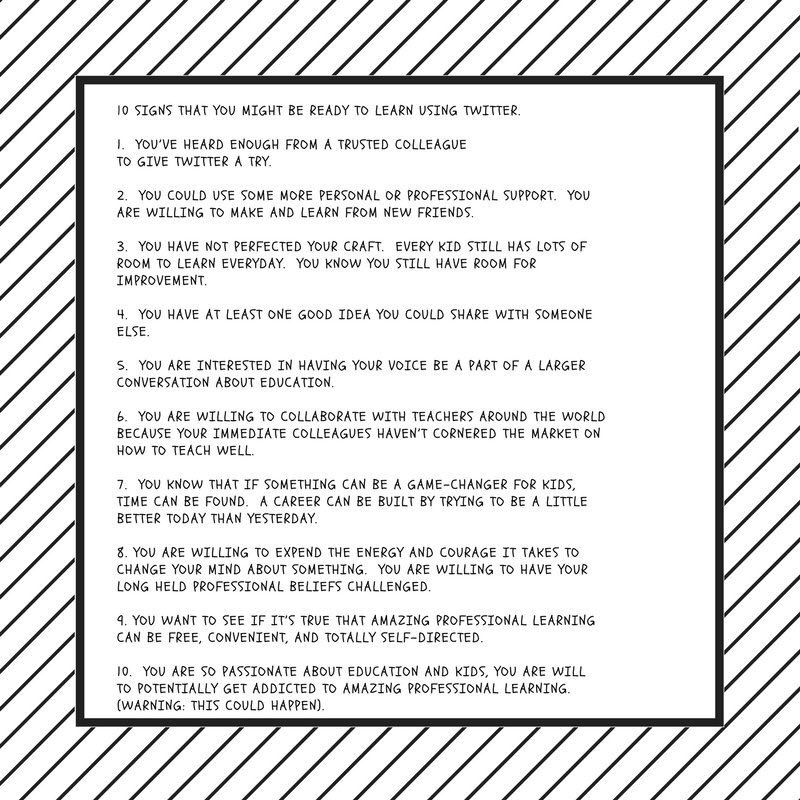These tips are actually true for conversations with just about anyone, not only students. Too often I think we avoid having a difficult conversation about a topic because we aren't sure how it will go. We aren't sure if it will be productive, so we just remain silent.
Or, on the other hand, we know the topic might evoke some strong emotions, so we come at the conversation forcefully, from a position of dominance. It's the "my way or the highway" approach. That might get compliance from students, but it won't build trust or stronger relationships. Underneath it all, there will be a kid who resents you.
Neither of these approaches is successful. It's not good to be silent and avoid the topic. And it's not good to be aggressive and overbearing either. A healthy relationship is build on mutual trust that comes through respectful dialogue.
Here are five tips for having difficult conversations that create shared meaning and understanding.
1. Keep Dialogue Open
Let the student know that you are willing to listen and work together to solve the problem. Ask if they are willing to listen to your thoughts too. Keep the focus on the issue and not on sweeping generalizations like "You always..." or "You never..." statements. You might even ask the student, "How can we have this conversation in a way that is positive and helpful?"
2. Make Respect a Top Priority
Let the student know you believe it's possible to solve any problem if both parties are respectful of one another. Let the student know you will never intentionally disrespect him or her. Let them know you want to hear what they think about the issue. The words we use are powerful and communicate our level of respect. Your body language and tone of voice are equally important.
3. Describe Your Intentions
You might say, "I'm willing to discuss this as long as it takes until we both feel good about how it's resolved." Let the student know you're wanting a solution he or she can feel good about too. We're aiming for a WIN/WIN outcome, not my way or the highway. As the teacher, you don't have to prove you're in charge. You ARE in charge. You don't have to prove it. Work cooperatively with students to seek WIN/WIN solutions.
4. Be Curious, Not Furious
Ask questions to understand the student's perspective. Be curious about what they are experiencing. Say, "Tell me more" or "Go on" to show you are interested in hearing the details. Paraphrase what they say to you to show you're listening. My biggest mistake is talking too much. When I'm "telling" a student what I think should happen, I'm missing the opportunity to listen and better understand the student's perspective.
5. Avoid Countering
Countering results in arguments. We start debating the facts. We build our case. We prove our points. It's about "being right." Try to avoid this trap. Try to stay curious and avoid countering. Spend more time listening. The goal is to get to a place where both parties let their guard down and work together cooperatively.
6. Timing is Everything
In my first few years as a principal, I would sometimes choose horrible timing to try to address an issue. I thought it had to be resolved immediately. Usually, that's not true. Most of the time it can wait until cooler heads prevail. If I sense there is no way to have safe dialogue in the moment, I'll step away temporarily. And then I'll resume the conversation in a different location in a different time. This works much better than allowing a situation to escalate.
7. Focus on the Future
Every kid needs a fresh start every day. Time spent holding onto yesterday means less time moving forward today. Take inventory of the current situation, but then focus on the future. Where do we want our relationship to go from here? How can we work together to make the future brighter in this situation? What are we trying to accomplish? What will it look like if we are successful in resolving this problem?
Some people might view these tips as "going easy, or "being soft" or "having low expectations." I would completely disagree. We must have firm boundaries. What's easy is avoiding the conversation entirely. What's easy is being silent. What's easy is also using threats or power to get your way. What's hard is listening to a student, understanding their perspective, and guiding them in a way that is cooperative and respectful. We MUST have boundaries, and we MUST challenge behavior that is harmful to learning. But the way we do it can either build trust or destroy it.
What are some of your strategies for having difficult conversations with students? I know you have some great tips to share. I want to hear from you. Leave a comment below or respond on Facebook or Twitter.
















